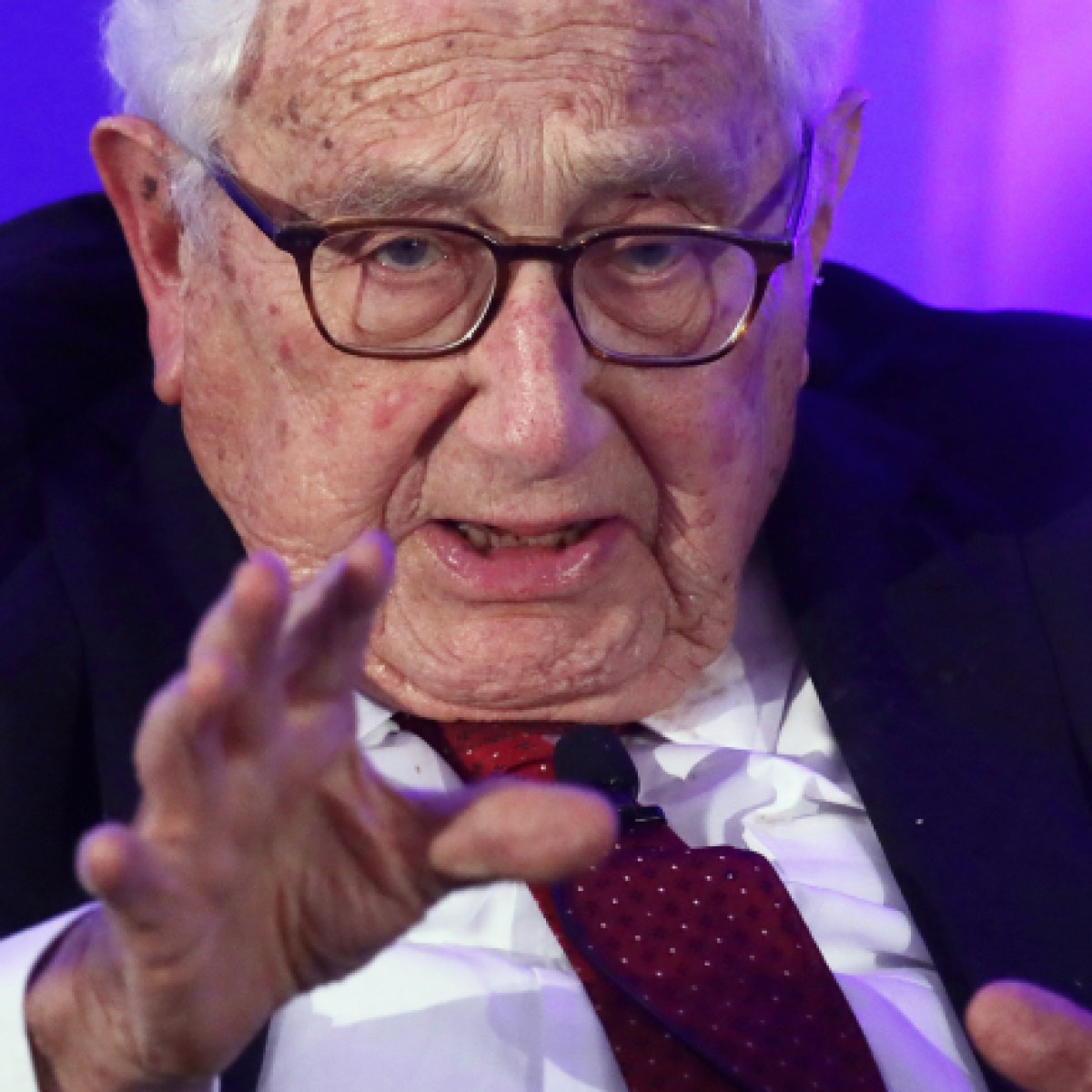
Israel has been widely condemned for its brutal response to the October 7 terrorist attacks by Hamas. With the coming expiration of the ceasefire, this will only become more vociferous. But many U.S. supporters of Israel have responded to the criticism with a question: What else is the beleaguered country supposed to do?
The answer is simple. Israel should do what it has never done before: agree to the establishment of a Palestinian state, based on international law.
This straightforward statement is scarce in mainstream U.S. political culture. In the speeches of politicians and in newspaper op-eds, it’s a matter of faith that Israel has always yearned for peace but has been constantly rebuffed by the Palestinians. The Palestinians, according to this narrative, prefer holding onto a dream of destroying Israel.
This is not quite 180 degrees the opposite of reality, but close. In the actual world outside of high-level American political rhetoric, Israel could have had peace at many times in the past 75 years. However, such a peace would have required Israel giving up most of the Palestinian land — specifically, Gaza and the West Bank, including East Jerusalem — it conquered in the Six-Day War in 1967. Israel has always preferred conflict with stateless Palestinians to that.
Amos Malka, one-time head of Israeli military intelligence, explained it straightforwardly in 2004. “It is possible to reach an agreement,” he said, “under the following conditions: a Palestinian state with Jerusalem as its capital and sovereignty on the Temple Mount; 97 percent of the West Bank plus exchanges of territory in the ratio of 1:1 with respect to the remaining territory; some kind of formula that includes the acknowledgement of Israel’s responsibility for the refugee problem and a willingness to accept 20,000-30,000 refugees.”
In polite circles of U.S. power, these facts are considered preposterous. Anyone describing them exiles themselves from serious discussion of the issue. It’s similar to the situation before the invasion of Iraq, when there was uniform agreement across the political spectrum that Iraq possessed so-called weapons of mass destruction. Any claims to the contrary were seen as self-evidently ludicrous, as ludicrous as now saying that Israel is a huge obstacle to peace.
From the Beginning
The Israeli–Palestinian conflict is not unfathomable. It’s a fight over land.
The British Peel Commission was tasked with investigating violent clashes between Arabs and Jews in Mandatory Palestine. It proposed in 1937 that the historic area of Palestine be partitioned into a Jewish state, making up about 17 percent of the area, and an Arab state, granted 75 percent. The remainder, including Jerusalem, would be under intentional supervision.
In 1947, following World War II and the Holocaust, the United Nations approved another partition plan. This gave Israel-to-be 56 percent of the area, and a Palestinian nation 43 percent.
In the standard U.S. story, the Zionist movement accepted both two-state solutions, and the Arab world rejected both. In fact, neither side accepted either.
The Israeli–Palestinian conflict is not unfathomable. It’s a fight over land.
The Arab side formally rejected the plans. The Zionist movement rejected the specifics of the Peel proposal and accepted the U.N. plan — but only in public. The founders of Israel privately agreed that once the country came into being, they would consolidate their power and then take over as much additional land as possible. David Ben-Gurion, who would become Israel’s first prime minister, put it this way in a famous 1937 letter to his son: “A Jewish state on only part of the land is not the end but the beginning. … The establishment of a state, even if only on a portion of the land, is the maximal reinforcement of our strength at the present time and a powerful boost to our historical endeavors to liberate the entire country.”
In any case, the U.N. adoption of the partition plan in November 1947 led to a moderate civil war between the Jewish and Arab populations. Then during the Arab–Israeli War of 1948 following Israel’s declaration of independence, the new country conquered 78 percent of Palestine, leaving 22 percent in Arab hands. Egypt controlled Gaza, and Jordan controlled the West Bank and East Jerusalem. Palestinians experienced the Nakba, meaning “catastrophe,” in which 700,000 people were expelled or fled, and 500 Palestinian villages were destroyed.
Subsequent history shows Ben-Gurion and other Israeli leaders meant what they said. In 1956, Israel joined with France and the U.K. to invade Gaza and Egypt’s Sinai Peninsula, though it was ultimately forced to withdraw by the Eisenhower administration. In the 1967 war, Israel took over Sinai and Gaza again, as well as the West Bank, East Jerusalem, and the Golan Heights in Syria.
Israel would eventually be forced to return the Sinai Peninsula following the 1973 Arab–Israeli War but has held onto everything else since.

The Early Years
It’s generally believed in the U.S. and Europe that after Israel’s founding, the Arab world spent decades devoted to destroying it. This is not so. There were absolutely factions in Arab politics who wished to reverse the establishment of Israel, and a great deal of blood-curdling Arab rhetoric on this subject. But various leaders of the relevant countries at various times — including Syria, Egypt, and Jordan — showed they understood the balance of forces and were willing to consider a compromise.
However, Ben-Gurion wrote in his diary in 1949 that Abba Eban, the Israeli ambassador to the U.N., “sees no need to run after peace. The armistice is sufficient for us; if we run after peace, the Arabs will demand a price of us: borders or refugees or both. Let us wait a few years.” That year Ben-Gurion also told his cabinet, as paraphrased by British–Israeli historian Avi Shlaim: “With the passage of time, the world would get used to Israel’s existing borders, and forget about U.N. borders and the U.N. idea of an independent Palestinian state.”
The U.S. pushed Israel to participate in a peace conference in Switzerland during the middle of 1949. The Arab position was that Israel’s borders should be not the armistice lines giving it 78 percent of Palestine, but the partition plan’s borders granting it 56 percent. The Arab participants also demanded that refugees from areas designated for an Arab state be able to return to their homes. Israel rejected both concepts. One of the Israeli delegates privately noted that his country’s government “think they can achieve peace without paying any price, maximal or minimal.” A cable from a U.S. State Department delegate asserted, “There never has been a time [during negotiations] when a generous and far-sighted attitude on the part of the Jews would not have unlocked peace. … As an advocate of the new state I hope they come to it eventually. Otherwise there will be no peace in the Middle East.”
The Emergence of the PLO
The Palestinian Liberation Organization was founded in 1964 and represented the increasing coherence of Palestinian national consciousness.
Following the 1967 war, the international consensus gradually came to be that peace would require the creation of a Palestinian state. At the same time, the PLO accepted internally that the overall war was over, and they had lost: They were therefore willing to make peace in return for a state on the 22 percent of Palestine constituting Gaza and the West Bank. A 1976 draft resolution at the U.N. Security Council called for this and stated that Israel should “withdraw from all the Arab territories occupied since June 1967.” The PLO supported the resolution. Every country on the Security Council except the U.S. — including the U.K., France, Italy, Japan, and Sweden — voted for it. But Israel had no interest in it, and the U.S. vetoed it. Instead of encouraging further moderation from the PLO, Israel invaded Lebanon in 1982 with — according to Zeev Maoz, an Israeli historian who served in the military during three of the country’s wars — several goals. The first was to destroy the PLO and hence Palestinian nationalism.

Bill Clinton’s Catastrophic Failure
In 1981, the PLO formally endorsed a Soviet proposal calling for a Palestinian state and “the security and sovereignty of all states of the region including those of Israel.” In 1988, the PLO officially recognized Israel and accepted its right to exist in peace and security.
Israel still had no interest in the establishment of a Palestinian state. And by the beginning of the Clinton administration in 1993, the PLO was not what it once had been. It was headquartered in Tunis, and little respected by younger Palestinians who had led the first intifada of the late 1980s. Then the PLO’s leader, Yasser Arafat, made the unfortunate decision to back Saddam Hussein in the 1991 Gulf War.
The PLO’s weakness made Arafat eager to accept a terrible deal in the 1993 Oslo Accords. While they were greeted with rapture in the U.S. media, there was nothing in them that would necessarily lead to the creation of a Palestinian state and peace. Indeed, one of the signatories, Israeli Prime Minister Yitzhak Rabin, soon explicitly explained, “We do not accept the Palestinian goal of an independent Palestinian state between Israel and Jordan. We believe there is a separate Palestinian entity short of a state.”
What happened then was exactly what anyone paying attention would anticipate: The PLO essentially took over security for Israel in some 18 percent of occupied territories — Israel solely controlled about 60 percent and shared responsibility for the remainder — and enriched itself, while the occupation and Palestinian misery continued unabated. But by the end of President Bill Clinton’s second term in the summer of 2000, he was eager to leave a legacy other than his affair with Monica Lewinsky. He cajoled Arafat to come to Camp David to meet with Israeli Prime Minister Ehud Barak, in hopes of conjuring a conflict-ending agreement.
The Palestinian attitude was that they had already made a gigantic compromise by accepting just the 22 percent of historic Palestine for their state. They were willing to compromise still more — but not much more.
Barak had no understanding of this. At Camp David, he offered the Palestinians what were essentially three disconnected bantustans — i.e., the equivalent of the separate black “homelands” in apartheid South Africa — in the West Bank, with Israel occupying and controlling the border with Jordan for some long period of time. Clinton tried to pressure Arafat to accept this; he did not. Long afterward, Shlomo Ben-Ami, a key Israeli negotiator at the talks, said, “Camp David was not the missed opportunity for the Palestinians, and if I were a Palestinian, I would have rejected Camp David as well.”
Clinton had promised Arafat that he would not blame him if the talks failed. He then reneged after the summit ended. Nonetheless, the Israelis and Palestinians continued to negotiate through the fall and narrowed their differences.
Clinton came up with what he called parameters for a two-state solution in December 2000. Several weeks afterward, Clinton proclaimed, “Both Prime Minister Barak and Chairman Arafat have now accepted these parameters as the basis for further efforts. Both have expressed some reservations.”
In the 22 years since, Bill Clinton has lied over and over again about what happened, claiming that Arafat was the one who rejected a settlement.
The Israelis and the Palestinians kept talking in late January 2001 in Taba, Egypt. It was not the Palestinians but Barak who terminated the discussions on January 27, a few weeks before Israeli elections. The negotiators issued a joint statement that the two sides had “never been closer to reaching an agreement and it is thus our shared belief that the remaining gaps could be bridged with the resumption of negotiations.”
This was in fact true: The records of the Taba talks show the Israelis and Palestinians had come agonizingly close to specific solutions to what the territory of a Palestinian state would be and whether and how any Palestinian refugees could return to Israel, with less progress on who would control which parts of Jerusalem.
But Barak was defeated by Ariel Sharon, who did not want a Palestinian state and did not restart the talks. The Israeli Ministry of Foreign Affairs declared that the Clinton parameters “are not binding on the new government to be formed in Israel.”
Clinton then made a fateful, disastrous decision. In the 22 years since, he has lied over and over again about what happened, claiming that Arafat was the one who rejected a settlement. This has convinced both Israelis and Americans that Clinton made every effort to give Palestinians a state. But it was impossible, because — in what became a standard formulation — there was “no partner for peace” on the Palestinian side. Hillary Clinton, who was elected to the Senate in 2000 and later became secretary of state, also joined in this key deception.
The Arab Peace Plan
In 2002, Saudi Arabia proposed a solution to the conflict known as the Arab Peace Initiative. The API called for a settlement along the standard lines that had been known for decades: an Israeli withdrawal from the occupied territories with some small adjustments, a fair division of Jerusalem, and “a just solution to the Palestinian refugee problem.” The 22 members of the Arab League endorsed it, as did the 57-state Organization of Islamic Cooperation. Israel, with Sharon leading the country, simply ignored it.
The Olmert Offer
The two sides again came close after Sharon suffered a debilitating stroke and Arafat died. Ehud Olmert became the Israeli prime minister. Olmert was right-wing but had become convinced that Israel had to settle the conflict with Palestinians for its own safety.
In the standard U.S. narrative, Olmert made a wonderful offer to Arafat’s successor, Mahmoud Abbas, and Abbas either rejected it or never responded. In reality, Olmert and Abbas held 36 secret meetings between 2006 and 2008.
However, Olmert, under investigation for accepting bribes, resigned from his position in 2008. He later said, “If I had remained prime minister for another four to six months, I believe it would have been possible to reach an agreement. The gaps were small.”
Olmert was succeeded as prime minister by Benjamin Netanyahu, who has consistently opposed a Palestinian state throughout his career and had no interest in continuing the talks with Abbas.
Lost Opportunities With Hamas
In the U.S., Hamas is considered anathema, for understandable reasons. Its original 1988 charter is explicitly antisemitic and calls for the obliteration of Israel. (A new Hamas charter was issued in 2017 and states that “Hamas affirms that its conflict is with the Zionist project not with the Jews because of their religion.”)
However, there have long been clear signs that factions within Hamas were moderating and open to long-term agreements with Israel. In 1997, Khaled Mashal, then the top Hamas leader, offered a 30-year ceasefire to Israel. Israel did not respond — but did immediately try to assassinate Mashal in Jordan.
In 2004, Sheik Ahmed Yassin, Hamas’s chief religious leader, called for a 10-year truce with Israel if it returned to its pre-1967 borders. Israel assassinated him two months later.
In 2006, Hamas won Palestinian elections over the PLO-affiliated Fatah. The new Palestinian prime minister, Hamas’s Ismail Haniyeh, wrote secretly to President George W. Bush. Haniyeh told Bush, “We are so concerned about stability and security in the area that we don’t mind having a Palestinian state in the 1967 border and offering a truce for many years.” Haniyeh also wrote an op-ed for the Washington Post, in which he said Palestinians priorities “included resolution of the refugee issue from 1948; reclaiming all lands occupied in 1967; and stopping Israeli attacks.” The Bush administration did not respond.
Around the same time, Mashal said Hamas would not oppose the Arab Peace Initiative. An Israeli spokesman responded that this was irrelevant “verbal gymnastics.”
In 2009, Efraim Halevy, the former head of Israel’s intelligence agency, the Mossad, wrote that Hamas has recognized “its ideological goal is not attainable and will not be in the foreseeable future,” but “Israel, for reasons of its own,” was not interested in such a discussion.
The same year, the U.S. Institute of Peace, a think tank funded by the federal government, reported that Hamas had “sent repeated signals that it may be ready to begin a process of coexisting with Israel.”
There are many more examples of this, along with Israeli disinterest demonstrated in the most extreme ways possible. In 2012, according to an Israeli peace activist, the head of Hamas’s military wing had become convinced that Palestinians should negotiate a long-term truce with Israel. On the same day Ahmed Jabari, Hamas’s military chief, was reviewing a draft proposal for such a truce, Israel assassinated him.
It is, of course, possible that this has all been a PR operation by Hamas, and that it has been making the same calculation as the Zionist movement originally did — i.e., that it could accept a partition of Palestine and then later expand to take the whole thing. But given the relative power of the two sides, this seems unlikely — and even if true, largely irrelevant.

Where Things Stand Now
It’s true that it may now be, from a political standpoint, impossible for Israel to make peace. Thanks to decades of nationalist propaganda, most left-of-center Israelis believed even before October 7 that there was no way to make peace with Palestinians. Meanwhile, right-wing nationalists and religious conservatives simply want to keep the West Bank and so wouldn’t make peace even if they thought it were possible.
Now, after last month’s shocking Hamas assault, the situation appears insoluble. Any Israeli leader who tried to do what’s necessary for a two-state solution, especially withdrawing settlers from the West Bank, would face the possibility of a revolt from a faction of the Israeli military and would personally be in great physical danger.
Nevertheless, we are where we are. What hope there is lies in the fact that the world — at least, the world minus the U.S., Israel, and the tiny island of Nauru — recognizes the incredible urgency of peace. The appalling suffering of Palestinians remains what it has been for 75 years: a sanguineous wound, both literally and metaphorically, at the center of the Middle East. If it is never healed, we will continually face the possibility of regional or even larger wars. Long ago, James Baldwin observed that “Not everything that is faced can be changed, but nothing can be changed until it is faced.” We don’t know if this horrendous tragedy can be ended, but if it can be, the first thing Americans and everyone else have to do is face reality.








